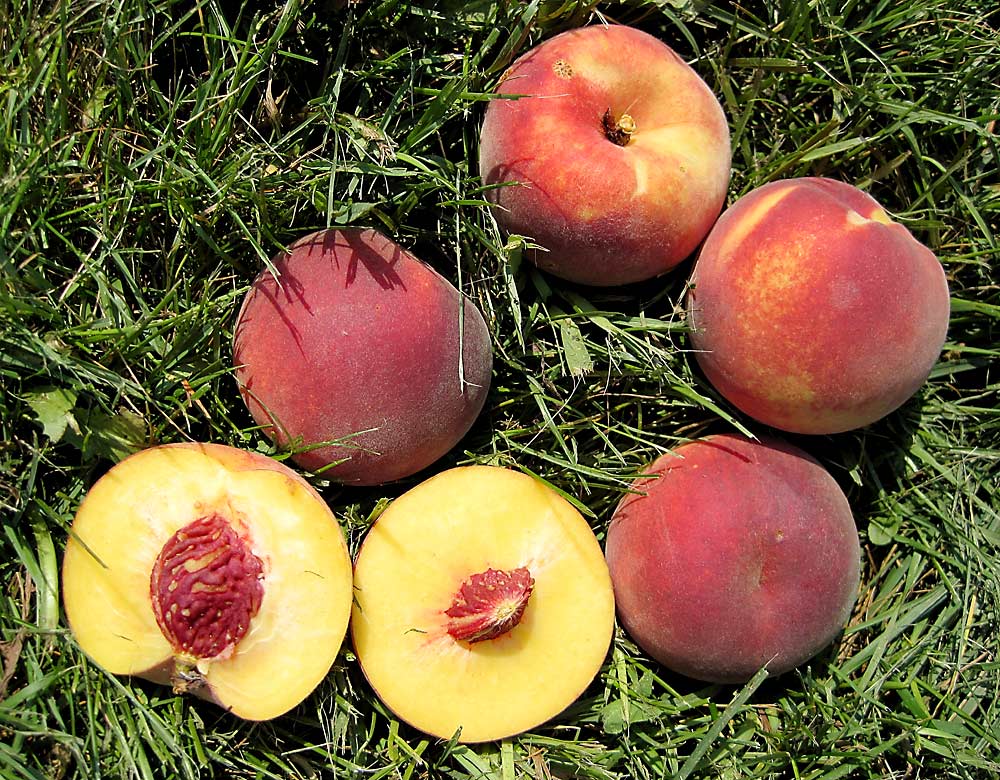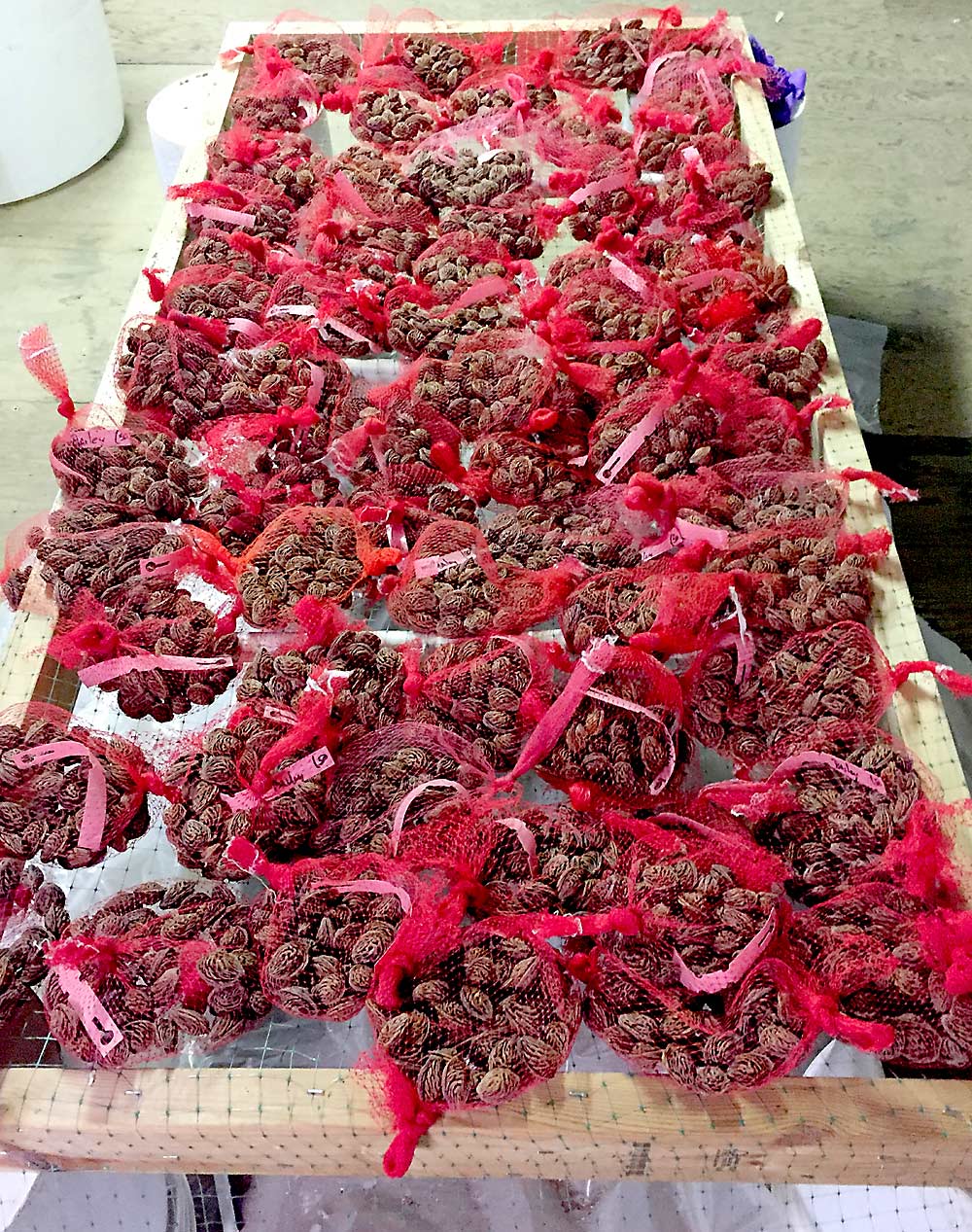
Bill Shane can picture his ideal peach. It would taste great, obviously. It would be 2.75 to 3 inches in diameter, with a relatively round shape. Its skin would be at least 60 percent red. It would be freestone with a sound pit, retain its firm flesh during harvesting and packing, and have no soft spots.
And if that ideal peach was grown on rootstock that was dwarfing enough for intensive production but also hardy enough to survive Michigan’s harsh winters — well, that would certainly help Michigan growers survive, maybe even thrive, in an increasingly competitive marketplace.
As the peach breeder at Michigan State University, Shane has been patiently seeking that ideal variety/rootstock combination for decades. But the journey from initial cross to commercial release takes a long time. A recent grant from the Michigan Department of Agriculture and Rural Development will help speed up the process.
The $55,940 grant was given to Michigan Peach Sponsors, a group that supports research, promotion and education on behalf of the Michigan peach industry. It has financially supported the MSU breeding program for years. The new grant money will be used to put promising candidates from Shane’s program into commercial orchards for evaluation.

After decades of crosses, Shane now has five fresh-market cultivars that excite him very much. He’s also been evaluating three new processing cultivars from Ontario.
“We need to take the critical step in getting the material out for growers to look at,” Shane said. “That’s what it takes for a new variety to make it. Nurseries need to hear from growers that want to buy it, and growers want to buy it because they know it performs well.”
Cooperating growers will plant limited blocks of test trees and work with researchers to collect the resulting data. Varieties and rootstocks need to be tested in multiple combinations at multiple locations, said Matt Moser, secretary/treasurer of Michigan Peach Sponsors and a salesman and broker for commercial nurseries.
“The idea is to get these elite varieties on rootstocks in growers’ hands and get quick-and-dirty results,” Moser said. “Do they like the peach? How will the rootstock work in Michigan conditions? The only way to get them into the nursery trade is if there’s grower demand for them.”
The peach industry needs to follow apples and cherries toward more efficient, high-density growing systems, and it needs to find the right rootstocks to do that, Moser said.
Michigan peaches grow mainly on the industry-standard Bailey and Lovell rootstocks. But rootstocks such as MP-29 from Georgia and Krymsk 86 from Russia have the potential to perform well in Michigan’s colder, wetter environment and sandy soils. MP-29 could have the dwarfing characteristics growers want for higher-density production, too. Krymsk 86 has performed well as a peach rootstock in the heavier, high-pH soils of Colorado, and also for almonds in California, but has not been adequately tested in Michigan, Shane said.
The MSU breeding program has traditionally focused on fresh-market varieties, but began looking at processing varieties in the past few years, after MSU inherited material from an Ontario breeding program that was discontinued. The Ontario processing varieties, with their emphasis on cold hardiness and disease resistance, have promise for the Midwest and Northeast regions of the United States, Shane said. •
—by Matt Milkovich






Leave A Comment